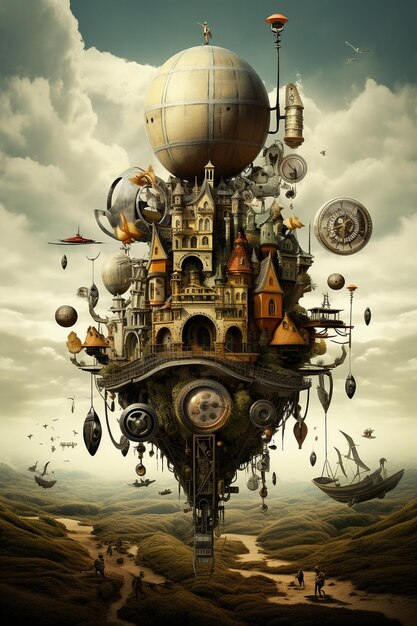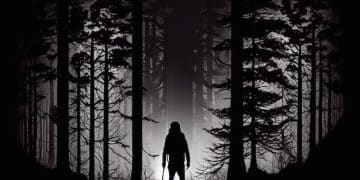Genre Bending: Exploring Movies That Defy Categorization

Anúncios
Genre bending in film refers to movies that blend elements from different genres, creating a unique and often unpredictable viewing experience that challenges traditional cinematic classifications.
Anúncios
Have you ever watched a movie that seamlessly blends science fiction with romance, or horror with comedy? That’s the magic of genre bending, a cinematic technique that defies traditional categorization and offers audiences a fresh and exciting experience.
what is genre bending in film?
Genre bending in film is the practice of combining elements from two or more distinct genres to create a hybrid movie that doesn’t fit neatly into any single category. This can involve mixing themes, stylistic approaches, and narrative conventions.
Anúncios
By blending genres, filmmakers can create unique and unpredictable stories that appeal to a wider audience. It also allows for more creative freedom, enabling directors and writers to explore new and innovative storytelling techniques.
The purpose of genre bending
The main goal of genre bending is to surprise and delight audiences with something new. By subverting expectations, these films can become memorable and thought-provoking.
Genre bending also allows filmmakers to explore complex themes and ideas that may not be possible within the confines of a single genre. It encourages experimentation and pushes the boundaries of what cinema can be.
Examples of genres that often blend
Some of the most common genre blends include:
- Science Fiction and Horror: Think “Alien” or “Event Horizon,” which combine futuristic settings with terrifying creatures and suspenseful plots.
- Comedy and Horror: Like “Shaun of the Dead” or “Tucker & Dale vs Evil,” these films find humor in scary situations, often using satire and self-awareness.
- Western and Horror: Such as “Bone Tomahawk,” which mixes the gritty realism of the Wild West with gruesome horror elements.
- Romance and Science Fiction: Examples includes “Her” and “Eternal Sunshine of the Spotless Mind”
In conclusion, genre bending enables filmmakers to break free from conventions and create diverse plots.

benefits of genre bending
Genre bending offers numerous creative and commercial advantages for filmmakers. It allows for original storytelling, broader audience appeal, and a unique marketing angle. These benefits often translate into critical acclaim and box office success.
The ability to subvert expectations and offer something fresh keeps audiences interested. Mixing genres can also provide commentary on the genres themselves, creating a level of self-awareness that resonates with moviegoers.
Increased originality
By combining different genres, filmmakers can come up with unique story ideas that have not been explored before. This can lead to more innovative and engaging films.
Genre blending allows writers and directors to step outside the box and challenge conventional narratives. This results in a more diverse and exciting cinematic landscape.
Enhanced audience engagement
When genres are mixed effectively, they can attract a wider audience. For example, people who typically don’t watch horror movies might be drawn to a horror-comedy because of the comedic elements.
The surprise factor of genre bending can also create a more memorable and shareable moviegoing experience. When a film defies expectations, viewers are more likely to talk about it and recommend it to others.
Greater depth and complexity
Combining genres allows for greater exploration of complex themes. A science fiction film with romantic elements can delve into the nature of love in a technologically advanced world.
- Blending genres can allow filmmakers to make commentary on our society.
- Exploring themes like social justice or political ideologies in a film that is primarily an action film is a way to get people thinking about issues that they otherwise wouldn’t.
- Allows Filmmakers to explore complex Themes.
In Summary, genre bending leads to increased originality, enhanced audience engagement and greater depth.
examples of successful genre-bending films
Over the years, several films have successfully blended genres to create memorable and critically acclaimed works. These films often push boundaries and redefine what audiences expect from cinema.
From action-comedies to romantic science fiction, these examples demonstrate the versatility and appeal of genre bending.
“Shaun of the Dead” (2004) – Comedy & Horror
“Shaun of the Dead” is a British comedy-horror film directed by Edgar Wright. It tells the story of Shaun, an ordinary man who must protect his loved ones during a zombie apocalypse.
The film seamlessly blends horror elements with British humor, creating a unique and hilarious viewing experience. It’s known for its clever writing, witty dialogue, and memorable characters.
“Pan’s Labyrinth” (2006) – Fantasy & War
“Pan’s Labyrinth,” directed by Guillermo del Toro, combines dark fantasy with the historical drama of post-Civil War Spain. The film follows a young girl named Ofelia as she escapes into a magical world to cope with the harsh realities of war.
The film is critically acclaimed for its striking visuals, compelling narrative, and emotional depth. It explores themes of innocence, rebellion, and the power of imagination.
“Parasite” (2019) – Black Comedy & Thriller
Directed by Bong Joon-ho, “Parasite” is a South Korean black comedy thriller that tells the story of a poor family who infiltrates the home of a wealthy one. The film blends dark humor with suspenseful moments, offering a biting commentary on class inequality.
- This film is both thrilling and comedic.
- Many movie watchers were glued to their seats wondering what would happen next.
- The film won numerous awards, including the Palme d’Or at the Cannes Film Festival and the Academy Award for Best Picture.
In closing, these films represent unique contributions to the art of genre bending.

challenges of genre bending
While genre bending can offer many creative advantages, it also presents several challenges for filmmakers. Successfully blending genres requires careful planning, skillful execution, and a deep understanding of audience expectations.
One of the biggest hurdles is achieving narrative coherence. Mixing elements from different genres can easily lead to a disjointed or confusing story if not handled properly.
Balancing disparate elements
Blending different genres requires a delicate balance to ensure that the various elements complement each other rather than clash. For instance, a horror-comedy needs to be genuinely scary and funny without undermining either genre’s impact.
A filmmaker must have a clear vision of how the genres will interact and enhance each other. This requires a deep understanding of each genre’s conventions, tropes, and audience expectations.
Avoiding tonal inconsistencies
Maintaining a consistent tone is crucial in genre-bending films. Abrupt shifts in tone can disorient viewers and make it difficult for them to connect with the story.
A tonal shift can be jarring and distracting. For instance, a serious drama interspersed with slapstick comedy can feel inappropriate and undermine the emotional impact of the story.
Meeting audience expectations
Genre blending can sometimes confuse or alienate audiences who come in with certain expectations. A movie marketed as a traditional romance, only to reveal itself as a science fiction thriller, may disappoint viewers who were expecting a straightforward love story.
Filmmakers must carefully manage audience expectations through marketing and storytelling techniques. It’s important to clearly communicate the film’s genre-bending nature to potential viewers while still enticing them to watch.
To Summarize, filmmakers need to take extra care in achieving balanced tone, and should be wary of audience expectation.
how to effectively blend genres
To effectively blend genres, filmmakers must have a clear understanding of each genre, a cohesive vision for the story, and strong execution skills. It’s a delicate balancing act that requires careful planning and attention to detail.
With the right approach, genre bending can offer a unique and rewarding cinematic experience.
Understand the genres
Before attempting to blend genres, it’s important to have a solid understanding of each one individually. Knowing the conventions, tropes, and audience expectations will help filmmakers create a seamless blend.
Without a deep understanding of each genre, the blend can feel superficial or disingenuous. For instance, a science fiction-western needs to capture the essence of both genres, not just borrow superficial elements.
Create a cohesive vision
A successful genre-bending film needs a cohesive vision that ties together the disparate elements. This vision should guide every aspect of the filmmaking process, from writing to directing to editing.
The vision should be clear and consistent throughout the film. This means avoiding sudden shifts in tone or style that could confuse or disorient viewers.
Focus on character development
Strong character development can help anchor a genre-bending film and make it more relatable to audiences. Even if the plot is complex or unconventional, well-developed characters can provide a sense of emotional connection.
Characters should be compelling and believable, with their own motivations, flaws, and strengths. Their actions and decisions should be consistent with their personalities, even in the context of the genre-bending narrative.
In conclusion, the most effective method hinges on understanding the genres in question, having a cohesive vision, and focusing on character development.
the future of genre bending in cinema
Genre bending is likely to continue to evolve as filmmakers seek new ways to innovate and engage audiences. With the rise of streaming services and independent cinema, there are more opportunities than ever for genre-bending films to find an audience.
As audiences become more open to unconventional narratives, the possibilities for genre blending are endless.
Technological advancements
Advancements in visual effects and special effects technology can help filmmakers create more seamless and believable genre blends. For instance, a fantasy-sci-fi film can benefit from cutting-edge CGI to bring its world to life.
Technology can also enhance practical effects, making it possible to create realistic and immersive environments. This can be particularly useful in horror-comedy films, where practical effects can add an extra layer of visceral impact.
Cross-cultural influences
As cinema becomes more globalized, cross-cultural influences are likely to play a greater role in genre bending. Filmmakers from different countries and backgrounds may bring unique perspectives and ideas to the table.
A film that blends elements from Eastern and Western genres can offer a fresh and original viewing experience. This can lead to more diverse and inclusive storytelling.
Rise of independent cinema
Independent films often have more freedom to experiment with genre bending than mainstream productions. Independent filmmakers are less constrained by commercial expectations and can take more creative risks.
- Indie film creates opportunities.
- Independent film often has more creative freedom.
- Genre Bending is already on the rise.
| Key Concept | Brief Description |
|---|---|
| 🎬 Mixing Genres | Combining themes to create unique movies. |
| 💡 Originality | Fresh stories offering new perspectives. |
| 🎭 Audience Appeal | Wider reach with combined genre elements. |
| 🌐 Cross-Cultural | Blending genres may often lead to global stories and themes. |
FAQ
▼
Genre bending refers to the practice of combining elements from two or more distinct genres of film, such as mixing science fiction with romance or horror with comedy, to create a unique cinematic experience.
▼
Successful genre-bending movies include “Shaun of the Dead” (comedy and horror), “Pan’s Labyrinth” (fantasy and war), and “Parasite” (black comedy and thriller), each blending genres effectively.
▼
The success of genre-bending movies often depends on balancing disparate elements, avoiding tonal inconsistencies, meeting audience expectations, and a number of other factors.
▼
Filmmakers can blend genres by understanding them, creating a cohesive vision for the story, focusing on strong character development, and finding creative ways of interweaving the stories.
▼
The future of genre bending in cinema looks promising, with technological advancements, cross-cultural influences, and the rise of independent cinema driving innovation and creating new opportunities.
Conclusion
In conclusion, genre bending is a dynamic and innovative approach to filmmaking that offers audiences a fresh and exciting experience. As cinema continues to evolve, we can expect to see even more genre-bending films that push boundaries and redefine what’s possible on the big screen.





